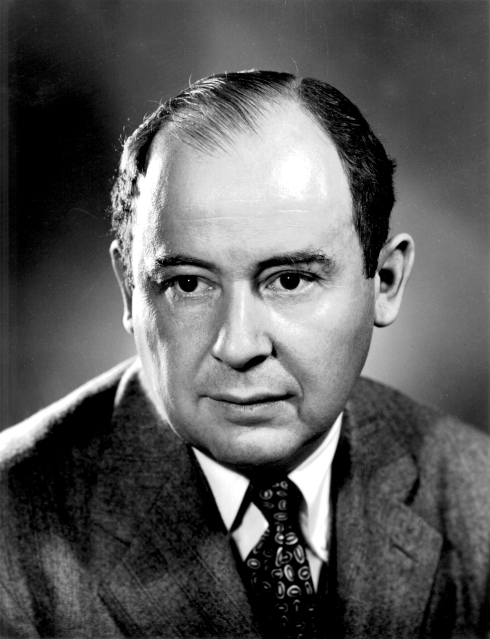|
Waldegrave Problem
In game theory, the Waldegrave problem is a problem first described in the second edition of Pierre Raymond de Montmort`s '' Essay d'analyse sur les jeux de hazard'', which is the first discussion of a mixed strategy to derive a solution in game theory. Montmort originally called Waldegrave's Problem the ''Problème de la Poulle'' or the Problem of the Pool. He provides a minimax mixed strategy solution to a two-person version of the card game le her Le her (or ''le hère'') is a French card game that dates back to the 16th century. It is quoted by the French poet Marc Papillon de Lasphrise in 1597. Under the name ''coucou'' it is mentioned in Rabelais' long list of games (in Gargantua ''L .... The general description of the problem is as follows: Suppose there are n+1 players with each player putting one unit into the pot or pool. The first two players play each other and the winner plays the third player. The loser of each game puts one unit into the pot. Play continues in ... [...More Info...] [...Related Items...] OR: [Wikipedia] [Google] [Baidu] |
Game Theory
Game theory is the study of mathematical models of strategic interactions. It has applications in many fields of social science, and is used extensively in economics, logic, systems science and computer science. Initially, game theory addressed two-person zero-sum games, in which a participant's gains or losses are exactly balanced by the losses and gains of the other participant. In the 1950s, it was extended to the study of non zero-sum games, and was eventually applied to a wide range of Human behavior, behavioral relations. It is now an umbrella term for the science of rational Decision-making, decision making in humans, animals, and computers. Modern game theory began with the idea of mixed-strategy equilibria in two-person zero-sum games and its proof by John von Neumann. Von Neumann's original proof used the Brouwer fixed-point theorem on continuous mappings into compact convex sets, which became a standard method in game theory and mathematical economics. His paper was f ... [...More Info...] [...Related Items...] OR: [Wikipedia] [Google] [Baidu] |
Pierre Raymond De Montmort
Pierre Remond de Montmort was a French mathematician. He was born in Paris on 27 October 1678 and died there on 7 October 1719. His name was originally just Pierre Remond. His father pressured him to study law, but he rebelled and travelled to England and Germany, returning to France in 1699 when, upon receiving a large inheritance from his father, he bought an estate and took the name de Montmort. He was friendly with several other notable mathematicians, and especially Nicholas Bernoulli, who collaborated with him while visiting his estate. He was elected a fellow of the Royal Society in 1715, while traveling again to England, and became a member of the French Academy of Sciences in 1716. De Montmort is known for his book on probability and games of chance, '' Essay d'analyse sur les jeux de hazard'', which was also the first to introduce the combinatorial study of derangements. He is also known for naming Pascal's triangle after Blaise Pascal, calling it "Table de M. Pascal ... [...More Info...] [...Related Items...] OR: [Wikipedia] [Google] [Baidu] |
Essay D'analyse Sur Les Jeux De Hazard
''Essay d'analyse sur les jeux de hazard'' (''Essay on the Analysis of Games of Chance'') is a book on combinatorics and mathematical probability written by Pierre Remond de Montmort published in 1708 with an expanded second edition in 1713. It was the first comprehensive text published on probability theory. With ''Essay'', Montmort intended to incorporate and build upon Jacob Bernoulli's unfinished ''Ars Conjectandi'', which remained unpublished at the time of Jacob's death. Both works applied theories of combinatorics and probability to analyze games of chance popular at the time. ''Essay'' additionally solved problems posed by Christiaan Huygens' treatise ''De ratiociniis in ludo aleae'' (''On Reasoning in Games of Chance'', 1657) and proposed the solutions for new and more complex problems. ''Essay'' greatly influenced the thinking of Montmort's more famous contemporaries, Nicolaus I Bernoulli and Abraham De Moivre. Continuation of Montmort's work In 1710, Montmort began a t ... [...More Info...] [...Related Items...] OR: [Wikipedia] [Google] [Baidu] |
Mixed Strategy
In game theory, a move, action, or play is any one of the options which a player can choose in a setting where the optimal outcome depends ''not only'' on their own actions ''but'' on the actions of others. The discipline mainly concerns the action of a player in a game affecting the behavior or actions of other players. Some examples of "games" include chess, bridge, poker, monopoly, diplomacy or battleship. The term strategy is typically used to mean a complete algorithm for playing a game, telling a player what to do for every possible situation. A player's strategy determines the action the player will take at any stage of the game. However, the idea of a strategy is often confused or conflated with that of a move or action, because of the correspondence between moves and pure strategies in most games: for any move ''X'', "always play move ''X''" is an example of a valid strategy, and as a result every move can also be considered to be a strategy. Other authors treat strate ... [...More Info...] [...Related Items...] OR: [Wikipedia] [Google] [Baidu] |
Solution Concept
In game theory, a solution concept is a formal rule for predicting how a game will be played. These predictions are called "solutions", and describe which strategies will be adopted by players and, therefore, the result of the game. The most commonly used solution concepts are equilibrium concepts, most famously Nash equilibrium. Many solution concepts, for many games, will result in more than one solution. This puts any one of the solutions in doubt, so a game theorist may apply a refinement to narrow down the solutions. Each successive solution concept presented in the following improves on its predecessor by eliminating implausible equilibria in richer games. Formal definition Let \Gamma be the class of all games and, for each game G \in \Gamma, let S_G be the set of strategy profiles of G. A ''solution concept'' is an element of the direct product \Pi_2^; ''i.e''., a function F: \Gamma \rightarrow \bigcup\nolimits_ 2^ such that F(G) \subseteq S_G for all G \in \Gamma. Rati ... [...More Info...] [...Related Items...] OR: [Wikipedia] [Google] [Baidu] |
Minimax
Minimax (sometimes Minmax, MM or saddle point) is a decision rule used in artificial intelligence, decision theory, combinatorial game theory, statistics, and philosophy for ''minimizing'' the possible loss function, loss for a Worst-case scenario, worst case (''max''imum loss) scenario. When dealing with gains, it is referred to as "maximin" – to maximize the minimum gain. Originally formulated for several-player zero-sum game theory, covering both the cases where players take alternate moves and those where they make simultaneous moves, it has also been extended to more complex games and to general decision-making in the presence of uncertainty. Game theory In general games The maximin value is the highest value that the player can be sure to get without knowing the actions of the other players; equivalently, it is the lowest value the other players can force the player to receive when they know the player's action. Its formal definition is: :\underline = \max_ \min_ W ... [...More Info...] [...Related Items...] OR: [Wikipedia] [Google] [Baidu] |
Le Her
Le her (or ''le hère'') is a French card game that dates back to the 16th century. It is quoted by the French poet Marc Papillon de Lasphrise in 1597. Under the name ''coucou'' it is mentioned in Rabelais' long list of games (in Gargantua ''La vie tres horrifique du grand Gargantua, père de Pantagruel jadis composée par M. Alcofribas abstracteur de quinte essence. Livre plein de Pantagruelisme'' according to 's 1542 edition, or simply Gargantua, is the second novel by François ..., 1534). Le Her belongs to the family of Ranter-Go-Round games. It is played with a standard deck of 52 cards by two people, designated the dealer and the receiver. King is ranked high and ace low. To play, the dealer gives one card to the receiver and one to the dealer. The receiver may choose to exchange cards with the dealer, unless the dealer has a king, in which case no exchange occurs. Then, the dealer may choose to exchange with the top card of the deck, unless the top card is a king, in w ... [...More Info...] [...Related Items...] OR: [Wikipedia] [Google] [Baidu] |
Nicolaus I Bernoulli
Nicolaus Bernoulli (also spelled Nicolas or Nikolas; in Basel – 29 November 1759 in Basel) was a Swiss mathematician and was one of the many prominent mathematicians in the Bernoulli family. Biography Nicolaus Bernoulli was born on in Basel. He was the son of Nicolaus Bernoulli, painter and Alderman of Basel. In 1704 he graduated from the University of Basel under Jakob Bernoulli and obtained his PhD five years later (in 1709) with a work on probability theory in law. His thesis was titled ''Dissertatio Inauguralis Mathematico-Juridica de Usu Artis Conjectandi in Jure''. In 1716 he obtained the Galileo-chair at the University of Padua, where he worked on differential equations and geometry. In 1722 he returned to Switzerland and obtained a chair in Logics at the University of Basel. Nicolaus I Bernoulli was deeply influenced by his family, particularly his uncle Jacob Bernoulli and his cousin Daniel Bernoulli, both of whom were prominent mathematicians. Jacob Bernoulli, ... [...More Info...] [...Related Items...] OR: [Wikipedia] [Google] [Baidu] |
Game Theory
Game theory is the study of mathematical models of strategic interactions. It has applications in many fields of social science, and is used extensively in economics, logic, systems science and computer science. Initially, game theory addressed two-person zero-sum games, in which a participant's gains or losses are exactly balanced by the losses and gains of the other participant. In the 1950s, it was extended to the study of non zero-sum games, and was eventually applied to a wide range of Human behavior, behavioral relations. It is now an umbrella term for the science of rational Decision-making, decision making in humans, animals, and computers. Modern game theory began with the idea of mixed-strategy equilibria in two-person zero-sum games and its proof by John von Neumann. Von Neumann's original proof used the Brouwer fixed-point theorem on continuous mappings into compact convex sets, which became a standard method in game theory and mathematical economics. His paper was f ... [...More Info...] [...Related Items...] OR: [Wikipedia] [Google] [Baidu] |


